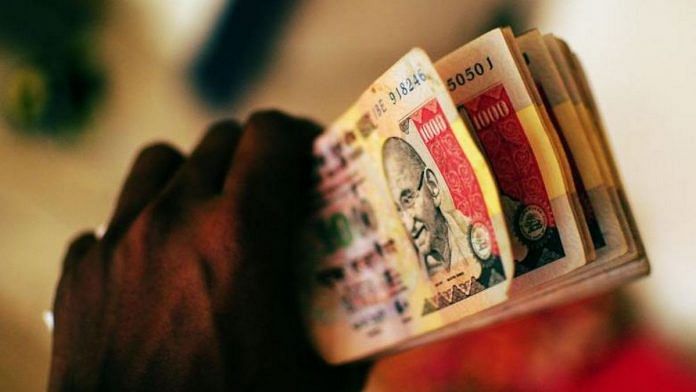New Delhi: The Income Tax (I-T) department has unearthed many cases of jewellers depositing unaccounted cash just after demonetisation was announced in November 2016, and many of them have come up with unique explanations for the surge in cash deposits.
In one instance, a jeweller deposited Rs 9.66 crore in three days after the noteban despite declaring an annual income of only Rs 26 lakh in his income tax returns, according to sources in the finance ministry.
Asked to explain the discrepancy, the sources told ThePrint, the jeweller claimed that he received cash in advance from more than 500 people as there was a rise in gold demand — considered a safe investment — after the Uri attacks the same year and the surge in tensions between India and Pakistan.
The sources said what made the tax department notice about the anomaly was the fact that the total annual electricity expenses of the jeweller was only Rs 1,474 and also the fact that he failed to show any details of the customers from who he claimed to have received the cash in advance.
In one of the deadliest attacks against Indian security forces, terrorists targeted an Army installation in Uri in September 2016, killing 17 soldiers and escalating tensions between India and Pakistan.
Also read: Why Modi govt’s NRC will be an even bigger blunder than demonetisation
Jewellers had common explanations for cash deposits
Several other cases were found in which cash deposits made by jewellers were not commensurate with the income declared in their annual I-T return filings.
A jeweller in Gujarat was found to have deposited more than Rs 4 crore in his bank account after the note ban as against Rs 44,000 deposited in the corresponding period a year ago.
The Narendra Modi government had scrapped high-value currency notes of Rs 500 and Rs 1,000 denomination on 8 November 2016 and asked people to deposit these notes in their bank accounts by 31 December that year. The move was aimed at checking black money.
The government was, however, caught by surprise when more than 99 per cent of the notes were deposited back into the system.
The I-T department then started the process of cross-checking high-value deposits with the tax returns filed by individuals, asking them to explain the source of such deposits.
The sources said the most common explanation from jewellers was that huge cash deposits were sale proceeds or cash received in advance from customers in the month preceding demonetisation, but they couldn’t support their argument with bills or details of the customers.
After demonetisation, the tax department sent notices to lakhs of taxpayers to explain their sources of income for the cash deposits and has even started prosecution in some cases.
Also read: IAF transported 625 tonnes of new notes after demonetisation, reveals former chief Dhanoa



